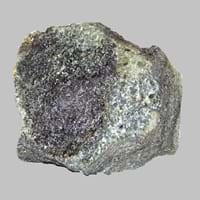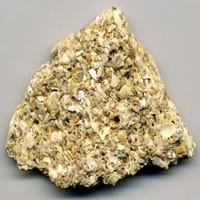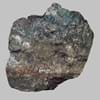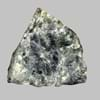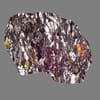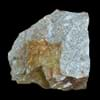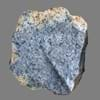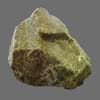Amphibolite and Coquina
Definition
Definition
Amphibolite can be defined as a granular metamorphic rock which mainly consist of hornblende and plagioclase
Coquina is a sedimentary rock that is composed either wholly or almost entirely of the transported, abraded, and mechanically-sorted fragments of the shells of molluscs, trilobites, brachiopods, or other invertebrates
History
Origin
Unknown
European Foreland Basins
Discoverer
Alexandre Brongniart
Unknown
Etymology
From Amphibole + -ite
From Concha (Latin)+ Coquina(Spanish) +conch(English)= Couquina (mid 19th century)
Class
Metamorphic Rocks
Sedimentary Rocks
Sub-Class
Durable Rock, Hard Rock
Durable Rock, Soft Rock
Family
Group
Not Applicable
Not Applicable
Other Categories
Coarse Grained Rock, Medium Grained Rock, Opaque Rock
Coarse Grained Rock, Opaque Rock
Texture
Texture
Banded, Foliated, Massive
Clastic
Color
Black, Brown, Green, Grey
Beige, Buff, Orange
Maintenance
Less
More
Durability
Durable
Non-Durable
Water Resistant
Yes
No
Scratch Resistant
Yes
No
Stain Resistant
Yes
No
Wind Resistant
No
No
Acid Resistant
Yes
No
Appearance
Foliated
Layered, Banded, Veined and Shiny
Uses
Architecture
Interior Uses
Countertops, Decorative Aggregates, Entryways, Floor Tiles, Flooring, Homes, Hotels, Kitchens
Decorative Aggregates, Homes, Hotels, Interior Decoration
Exterior Uses
As Building Stone, As Facing Stone, Paving Stone, Office Buildings
Garden Decoration, Office Buildings
Other Architectural Uses
Curbing
Curbing
Industry
Construction Industry
As Dimension Stone, Building houses or walls, Cobblestones, Construction Aggregate, for Road Aggregate, Landscaping, Production of Glass and Ceramics, Roadstone
Building houses or walls, Construction Aggregate
Medical Industry
Not Yet Used
Not Yet Used
Antiquity Uses
Artifacts, Sculpture, Small Figurines
Artifacts, Monuments, Sculpture, Small Figurines
Other Uses
Commercial Uses
Cemetery Markers, Commemorative Tablets, Creating Artwork
Creating Artwork
Types
Types
Hornblendite
Not Available
Features
Clasts are smooth to touch, Matrix variable, Surfaces are often shiny
Available in Lots of Colors and Patterns, Is one of the oldest rock
Archaeological Significance
Monuments
Used
Used
Famous Monuments
Data Not Available
Data Not Available
Sculpture
Used
Used
Famous Sculptures
Data Not Available
Data Not Available
Pictographs
Not Used
Used
Petroglyphs
Not Used
Used
Figurines
Used
Used
Fossils
Absent
Present
Formation
Formation
Amphibolite is a coarse-grained metamorphic rock which forms by metamorphism of mafic igneous rocks like basalt and gabbro or from the metamorphism of clay-rich sedimentary rocks like marl or graywacke.
Coquina is a sedimentary rock which is formed when billions of small clam-like seashell, called Coquina, or cockleshell are die and hence are deposited, buried and turns into a rock when pressure is applied.
Composition
Mineral Content
Amphibole, Andalusite, Biotite, Calcite, Epidote, Garnet, Hornblade, Kyanite, Magnetite, Olivine, Plagioclase, Pyroxene, Staurolite, Wollastonite
Apatite, Augite, Bronzite, Calcite, Chert, Chlorite, Clay Minerals, Epidote, Feldspar, Garnet, Micas, Muscovite or Illite
Compound Content
Aluminium Oxide, CaO, Iron(III) Oxide, FeO, Potassium Oxide, MgO, MnO, Sodium Oxide, Phosphorus Pentoxide, Silicon Dioxide, Titanium Dioxide
CaO, Carbon Dioxide, Iron(III) Oxide, MgO
Transformation
Metamorphism
No
No
Types of Metamorphism
Not Applicable
Not Applicable
Weathering
Yes
Yes
Types of Weathering
Chemical Weathering, Mechanical Weathering
Biological Weathering, Chemical Weathering, Mechanical Weathering
Erosion
Yes
Yes
Types of Erosion
Chemical Erosion, Glacier Erosion, Sea Erosion, Wind Erosion
Coastal Erosion, Sea Erosion, Water Erosion, Wind Erosion
Properties
Physical Properties
Hardness
6-7
1-2
Grain Size
Medium to Coarse Grained
Coarse Grained
Fracture
Irregular to Conchoidal
Irregular
Streak
White to Grey
White
Porosity
Less Porous
Highly Porous
Luster
Vitreous to Dull
Dull to Vitreous to Submetallic
Cleavage
Irregular
Not Available
Toughness
2.3
Not Available
Specific Gravity
2.5
1.10-2.24
Transparency
Opaque
Opaque
Density
2.85-3.07 g/cm3
2.8-2.9 g/cm3
Thermal Properties
Resistance
Heat Resistant, Pressure Resistant, Wear Resistant
Heat Resistant, Impact Resistant, Pressure Resistant, Wear Resistant
Reserves
Deposits in Eastern Continents
Asia
Russia, Turkey
Not Yet Found
Africa
Burundi, Djibouti, Eritrea, Ethiopia, Kenya, Madagascar, Rwanda, Somalia, South Africa, Sudan, Tanzania, Uganda
Not Yet Found
Europe
Germany, Greece, Iceland, Norway, Poland
United Kingdom
Others
Not Yet Found
Not Yet Found
Deposits in Western Continents
North America
Canada, USA
USA
South America
Brazil
Not Yet Found
Deposits in Oceania Continent
Australia
South Australia, Western Australia
Not Yet Found
All about Amphibolite and Coquina Properties
Know all about Amphibolite and Coquina properties here. All properties of rocks are important as they define the type of rock and its application. Amphibolite belongs to Metamorphic Rocks while Coquina belongs to Sedimentary Rocks.Texture of Amphibolite is Banded, Foliated, Massive whereas that of Coquina is Clastic. Amphibolite appears Foliated and Coquina appears Layered, Banded, Veined and Shiny. The luster of Amphibolite is vitreous to dull while that of Coquina is dull to vitreous to submetallic. Amphibolite is available in black, brown, green, grey colors whereas Coquina is available in beige, buff, orange colors. The commercial uses of Amphibolite and Coquina are cemetery markers, commemorative tablets, creating artwork.
|
||
|
||
|
